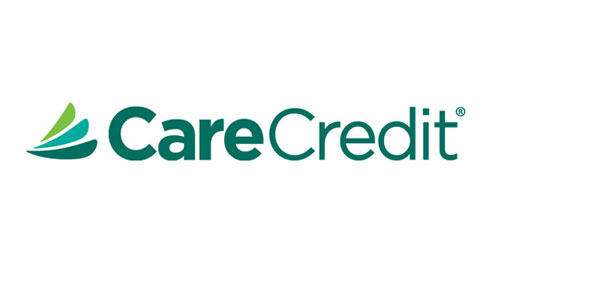Debt carried on credit cards fits the definition of revolving debt. Each month, you may borrow up to your credit limit, and as long as you pay back at least that much, you can keep doing so indefinitely. Contrary to installment loans, credit card accounts may be kept open indefinitely even after the debt has been paid in full. However, this form of debt may quickly snowball out of control, causing chaos on your budget and credit. Keep reading to find out more regarding how to make responsible use of your credit card and avoid falling into the debt trap that comes with it.
The Mechanisms behind Credit Card Debt
A debt incurred using a credit card is considered to be unsecured. There is no collateral in the form of a car or house that the lender may take and sell if the borrower defaults on the loan. Still, the effects of delinquent credit card payments may be devastating. If you really do not clear off your monthly credit card bill in full, you'll end up with debt. Monthly card balances incur an APR.
Interest rates on credit cards are often variable. They are calculated in accordance with the prime rate, the market rate that is linked to the federal funds rate used as a standard by the Federal Reserve. When the Federal Reserve increases or decreases this target rate, it has a domino effect on other interest rates and the value of the credit card debt. Credit card companies often insist on a minimum monthly payment being made. It's usually between 1 percent & 2percent of your total debt, in addition to interest and any other applicable fees. Credit card interest is compounded, so if you don't pay the whole debt each month, you'll end up owing more money in interest. Additional interest is added to the outstanding balance. If you put off paying off your credit card debt, you might expect to pay back significantly more than you initially charged.
Credit Card Debt and Its Drawbacks
Credit card debt doesn't boost your credit rating, despite widespread perception. You may raise your credit score by responsible use of credit. This entails charging no more than you are able to pay off in full every month, maintaining a payment history that is free of late fees, and maintaining your balances as near to 0 as you can get them. You may use one of three different calculations to determine whether your credit card debt is too high. The ratio of your current credit card debt to your available credit is known as your credit usage ratio. The utilization rate is the ratio of your total credit card balances to your total credit limits. Your payment record is the single most important factor in determining your credit score. Credit usage ratios that are lower are preferable. Your credit score may take a hit if your ratio is higher than 30%.

The debt-to-income ratio measures your monthly debt payments in relation to your monthly income. The proportion of your monthly pre-tax revenue goes into housing & debt obligations, particularly credit card payments, and is reflected in your debt to income ratio. When evaluating new loan applications, lenders take a glance at this proportion to assess how much extra debt you can—or cannot—afford to take on. The ratio of the monthly credit card transactions to the monthly earnings is the credit card debt. Using this metric, you may determine whether your monthly bills will exceed your income. If your minimal payments exceed 10 percent of your net income (money left over after taxes), it may be challenging to cover basic living costs. Some warning signals of credit card debt that don't include numbers are as follows:
- Your monthly expenses exceed your income.
- Because you need the money for other expenditures, you are either not paying your credit card invoices or paying them late.
- You have effectively paid using a different credit card.
- You use a credit card for everything from petrol to groceries.
- Instead of putting money down in a savings account every month, you're using credit cards.
What's Good About Credit Card Debt?
One of the most common types of revolving credit, credit cards are convenient and useful in many ways for those who use them. Credit card holders have access to revolving credit restrictions that may be drawn upon as required. The monthly payments are often substantially cheaper than those required by a traditional, non-revolving loan. Users may avoid paying excessive interest rates by paying off their balances. Additionally, the majority of credit cards provide bonus rewards like cash back or credits that may be applied to current purchases or even utilized to reduce existing amounts.
What You Need to Know About Credit Reports and Analysis

Each month, lenders send credit bureaus information about how much debt a borrower has on their credit cards and what else they have done with their credit. For this reason, credit cards may be a great tool for borrowers looking to establish or improve their credit history. Credit card borrowers may get into trouble if they repeatedly make late payments, carry large amounts, or make a large number of difficult inquiries within a short time frame.
Credit card debt has a considerable impact on a borrower's credit rating since it often accounts for a substantial amount of credit use on their credit profile. Credit reports provide detailed information on all of a consumer's credit accounts in the form of "trade lines." Credit bureaus compute a borrower's credit usage ratio by dividing their entire credit card debt by their overall credit limit. The percentage of available credit that a borrower makes use of is a major factor in determining that borrower's creditworthiness.
Monthly, lenders will record a borrower's payment history to credit reporting agencies. A borrower's credit rating suffers when payments are late, whereas it improves when payments are made on time. Borrowers with a history of timely payments often enjoy lower interest rates and access to better loan options. A borrower's credit rating is boosted by paying off large amounts of credit card debt considering credit card use is a component of a borrower's credit rating. Minimal credit card balances assist borrowers in preserving excellent credit.




